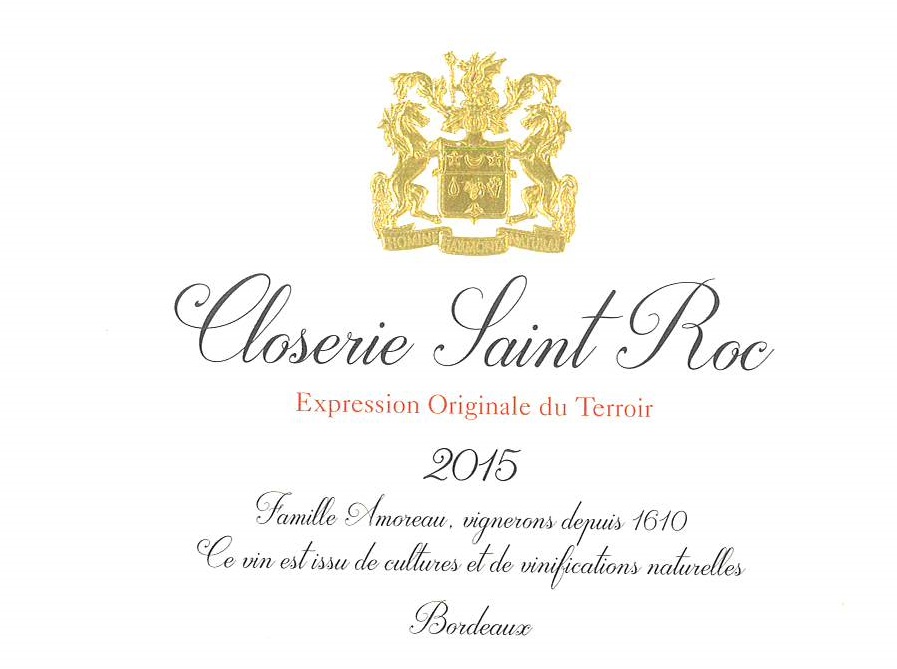
Closerie Saint Roc
Wines
Puisseguin
Closerie Saint Roc, Vin de France Rouge
Situated just 1 kilometer south of Château Le Puy on the same plain of asterie limestone, this 16-hectare vineyard was acquired by the Amoreau family (owners of Le Puy for over 400 years) in the early 2010s. Several different cuvées are produced, based on differences in soil, but all are made in the vein of Le Puy’s iconic “Barthélemy”: aging two years in old 228-liter barrels on the gross lees which are stirred in (“dynamized”) regularly, and with no sulfur added at any point. These are elegant, lifted, “natural” Bordeaux par excellence—gorgeously lithe and textured. This flagship cuvée is 70% Merlot, 20% Cabernet Franc and 10% Cabernet Sauvignon.
Closerie Saint Roc, “Les Noyers”, Vin de France Rouge
“Les Noyers” hails from a 2.9-hectare parcel with soils of equal parts sand, silt, and clay, planted 80% to Cabernet Franc and 20% to Merlot. Compared to the “Les Pins” above, this is even finer and more lithe—a reflection of the vineyard’s preponderance of sand—but equally harmonious on the palate, and the blend’s high proportion of Cabernet Franc contributes a gorgeous earthy spice element. Fermented spontaneously in cement during a two-week maceration, it spends 18 months aging in old barrels with the lees regularly “dynamized” into the wine according to the lunar calendar, and it is bottled without any additions whatsoever. Each bottle is topped with high-quality red wax and enclosed in translucent tissue paper.
Closerie Saint Roc, “Les Pins”, Vin de France Rouge
Comprised of 50% each Cabernet Franc and Merlot planted in a 1.3-hectare parcel of silt, clay, and a touch of sand, “Les Pins” offers soaring aromas of dusty strawberries, smoky graphite, and black pepper, with a palate simultaneously gentle and commanding. There is a seamless harmony of acid, fruit, and tannin, with an overall impression of finesse and silkiness. Fermented spontaneously in cement during a two-week maceration, it spends 18 months aging in old barrels with the lees regularly “dynamized” into the wine according to the lunar calendar, and it is bottled without any additions whatsoever. Each bottle is topped with high-quality red wax and enclosed in translucent tissue paper.




